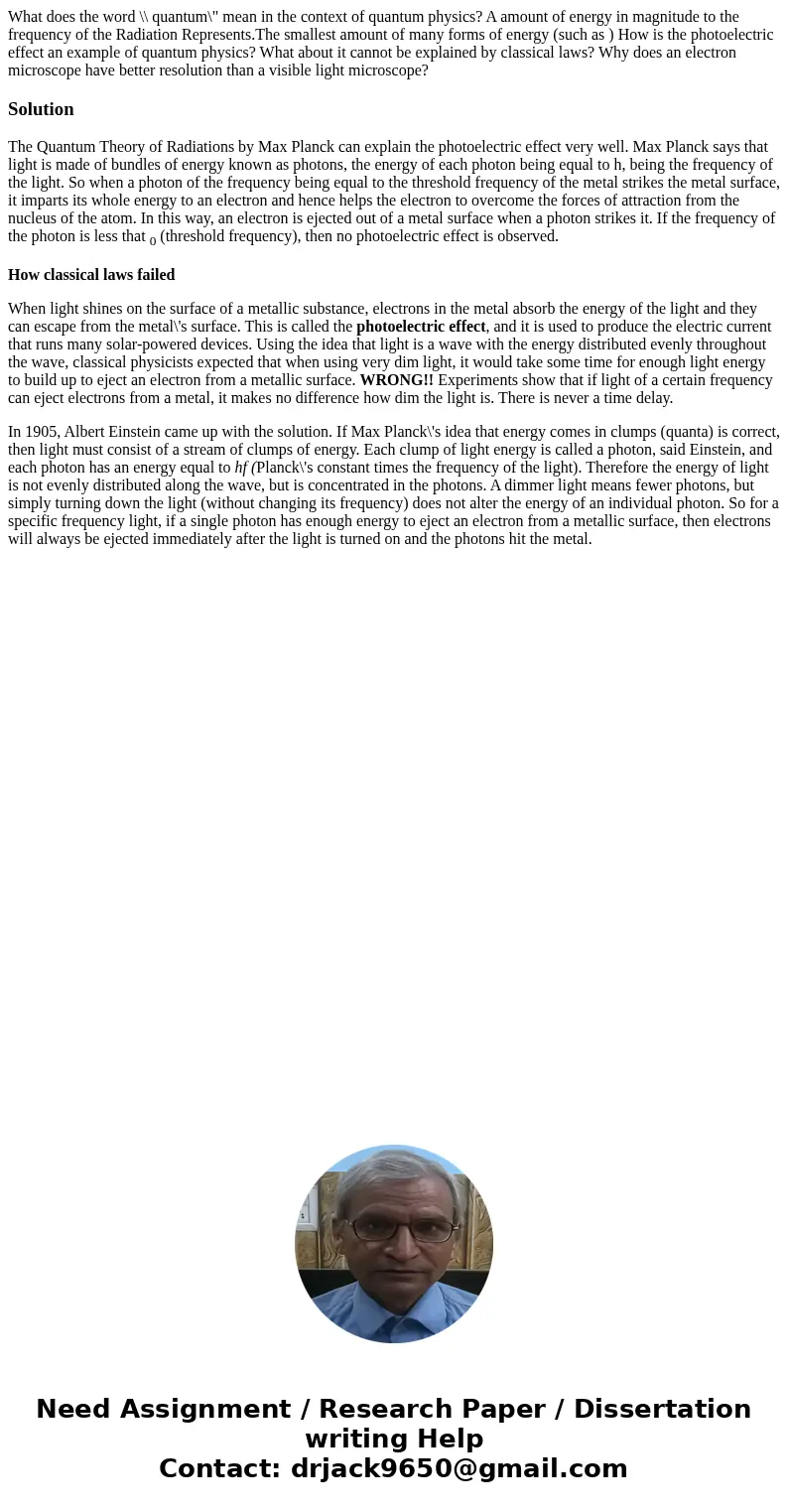What does the word quantum mean in the context of quantum p
Solution
The Quantum Theory of Radiations by Max Planck can explain the photoelectric effect very well. Max Planck says that light is made of bundles of energy known as photons, the energy of each photon being equal to h, being the frequency of the light. So when a photon of the frequency being equal to the threshold frequency of the metal strikes the metal surface, it imparts its whole energy to an electron and hence helps the electron to overcome the forces of attraction from the nucleus of the atom. In this way, an electron is ejected out of a metal surface when a photon strikes it. If the frequency of the photon is less that 0 (threshold frequency), then no photoelectric effect is observed.
How classical laws failed
When light shines on the surface of a metallic substance, electrons in the metal absorb the energy of the light and they can escape from the metal\'s surface. This is called the photoelectric effect, and it is used to produce the electric current that runs many solar-powered devices. Using the idea that light is a wave with the energy distributed evenly throughout the wave, classical physicists expected that when using very dim light, it would take some time for enough light energy to build up to eject an electron from a metallic surface. WRONG!! Experiments show that if light of a certain frequency can eject electrons from a metal, it makes no difference how dim the light is. There is never a time delay.
In 1905, Albert Einstein came up with the solution. If Max Planck\'s idea that energy comes in clumps (quanta) is correct, then light must consist of a stream of clumps of energy. Each clump of light energy is called a photon, said Einstein, and each photon has an energy equal to hf (Planck\'s constant times the frequency of the light). Therefore the energy of light is not evenly distributed along the wave, but is concentrated in the photons. A dimmer light means fewer photons, but simply turning down the light (without changing its frequency) does not alter the energy of an individual photon. So for a specific frequency light, if a single photon has enough energy to eject an electron from a metallic surface, then electrons will always be ejected immediately after the light is turned on and the photons hit the metal.

 Homework Sourse
Homework Sourse